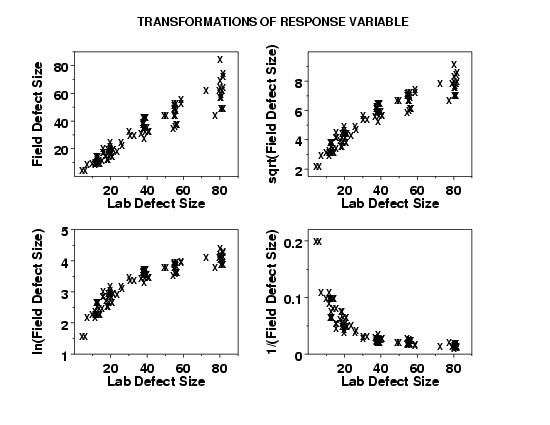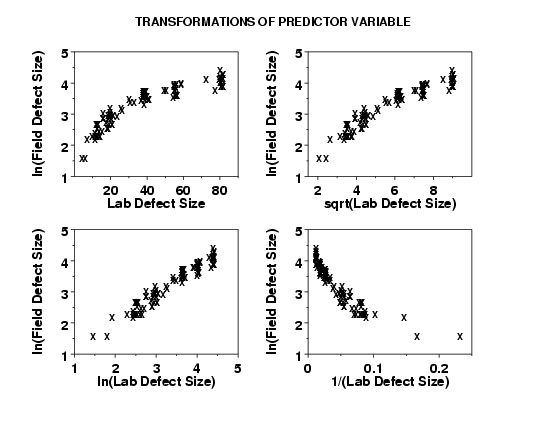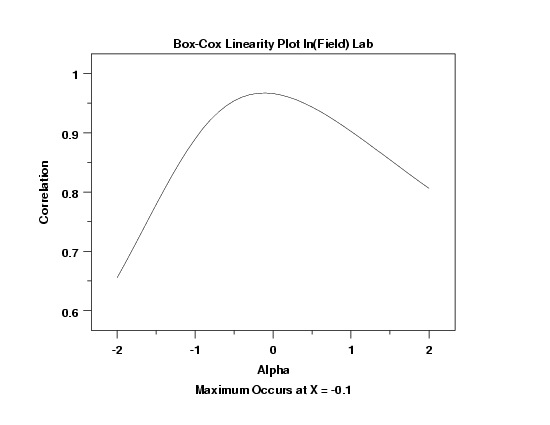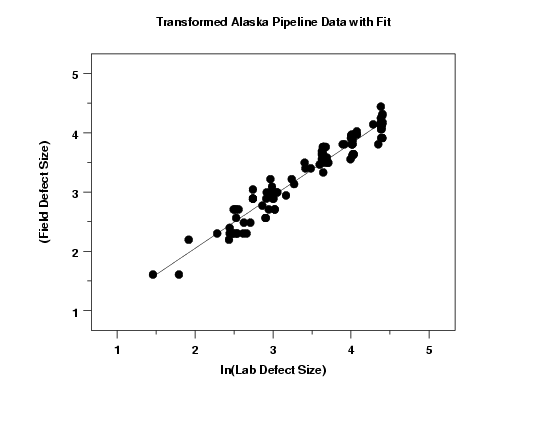4.6. Case Studies in Process Modeling
4.6.2. Alaska Pipeline
4.6.2.4. |
Transformations to Improve Fit and Equalize Variances |
- to satisfy the homogeneity of variances assumption for the errors.
- to linearize the fit as much as possible.
In examining these plots, we are looking for the plot that shows the most constant variability across the horizontal range of the plot.
This plot indicates that the ln transformation is a good candidate model for achieving the most homogeneous variances.
This plot shows that the ln transformation of the predictor variable is a good candidate model.
This plot indicates that a value of -0.1 achieves the most linear fit.
In practice, for ease of interpretation, we often prefer to use a common transformation, such as the ln or square root, rather than the value that yields the mathematical maximum. However, the Box-Cox linearity plot still indicates whether our choice is a reasonable one. That is, we might sacrifice a small amount of linearity in the fit to have a simpler model.
In this case, a value of 0.0 would indicate a ln transformation. Although the optimal value from the plot is -0.1, the plot indicates that any value between -0.2 and 0.2 will yield fairly similar results. For that reason, we choose to stick with the common ln transformation.
Parameter Estimate Stan. Dev t Value B0 0.281384 0.08093 3.48 B1 0.885175 0.02302 38.46 Residual standard deviation = 0.168260 Residual degrees of freedom = 105 Lack-of-fit F statistic = 1.7032 Lack-of-fit critical value, F0.05,76,29 = 1.73Note that although the residual standard deviation is significantly lower than it was for the original fit, we cannot compare them directly since the fits were performed on different scales.
The plot of the predicted values with the transformed data indicates a good fit. In addition, the variability of the data across the horizontal range of the plot seems relatively constant.
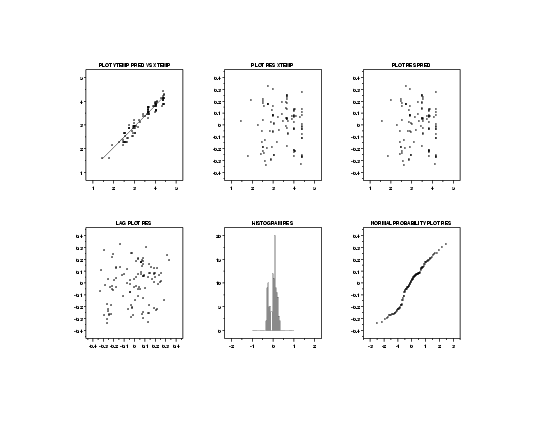
Since we transformed the data, we need to check that all of the regression assumptions are now valid.
The 6-plot of the residuals indicates that all of the regression assumptions are now satisfied.
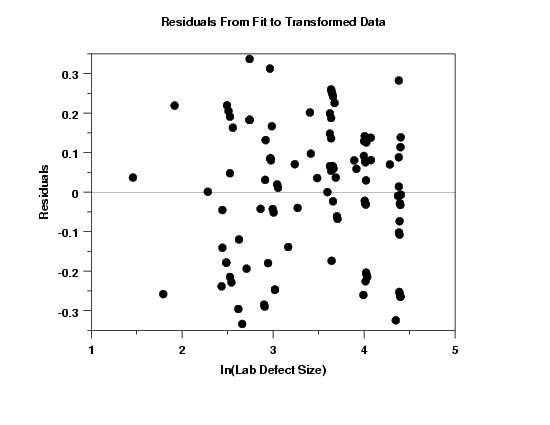
In order to see more detail, we generate a full-size plot of the residuals versus the predictor variable, as shown above. This plot suggests that the assumption of homogeneous variances is now met.

